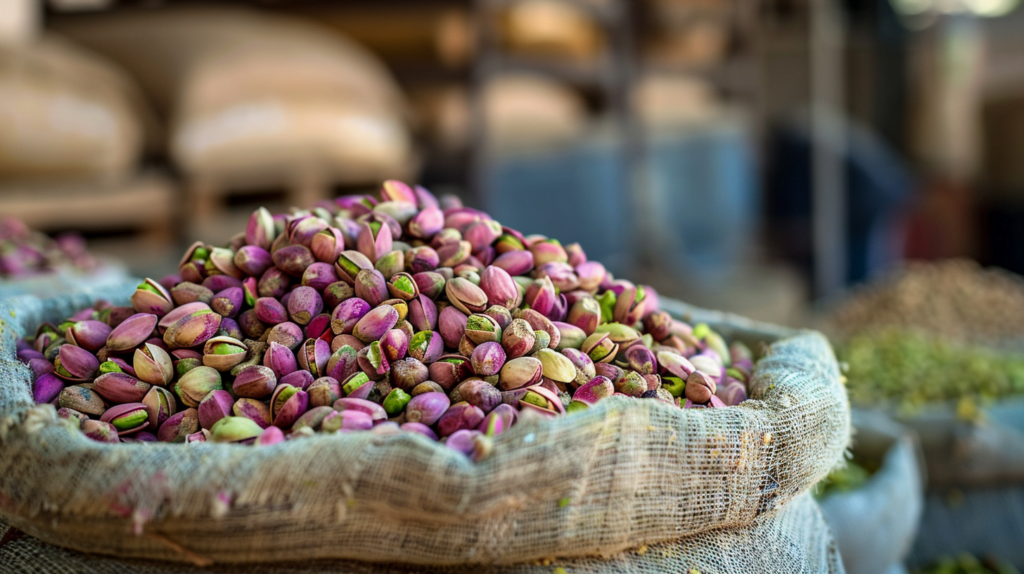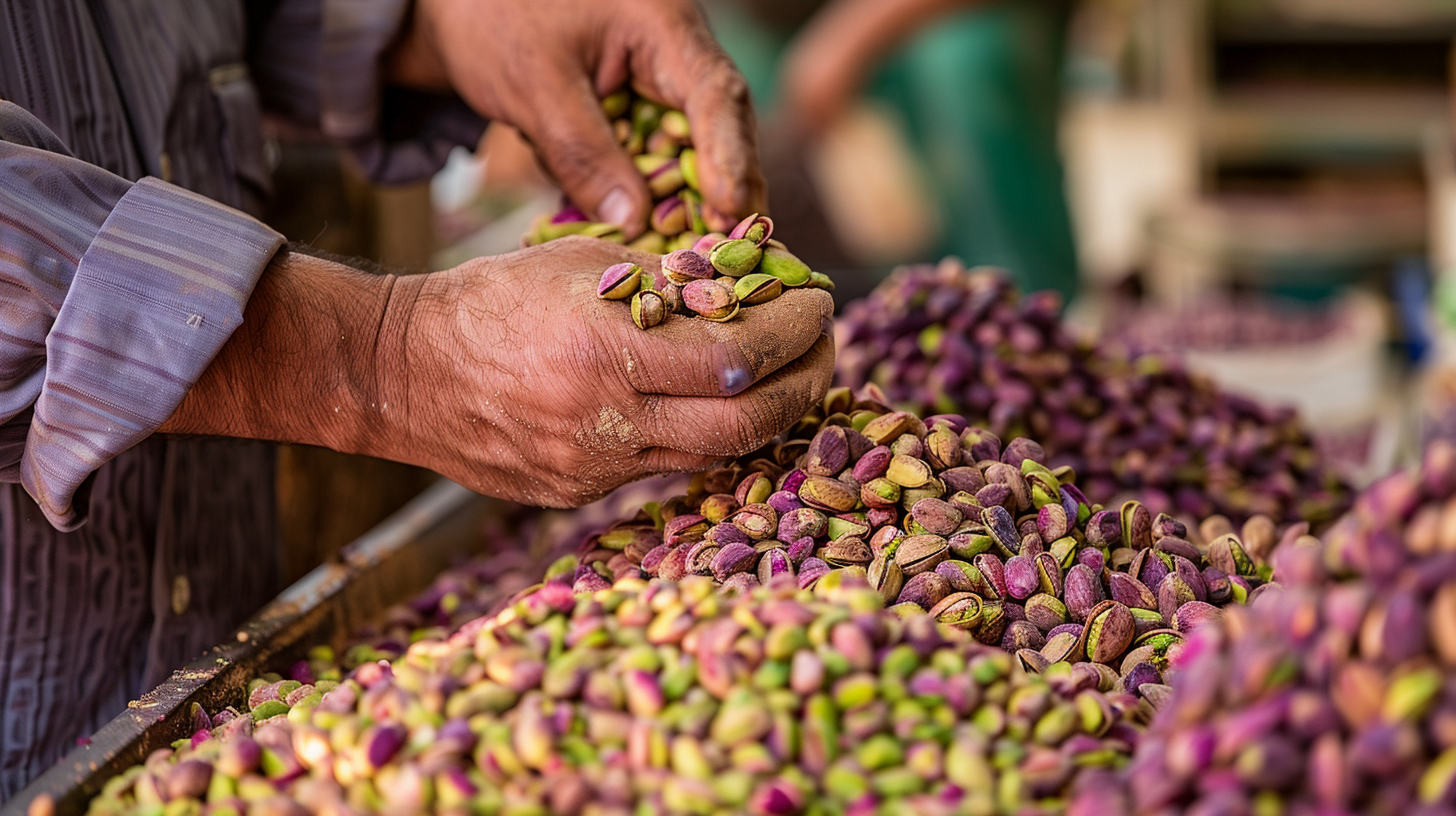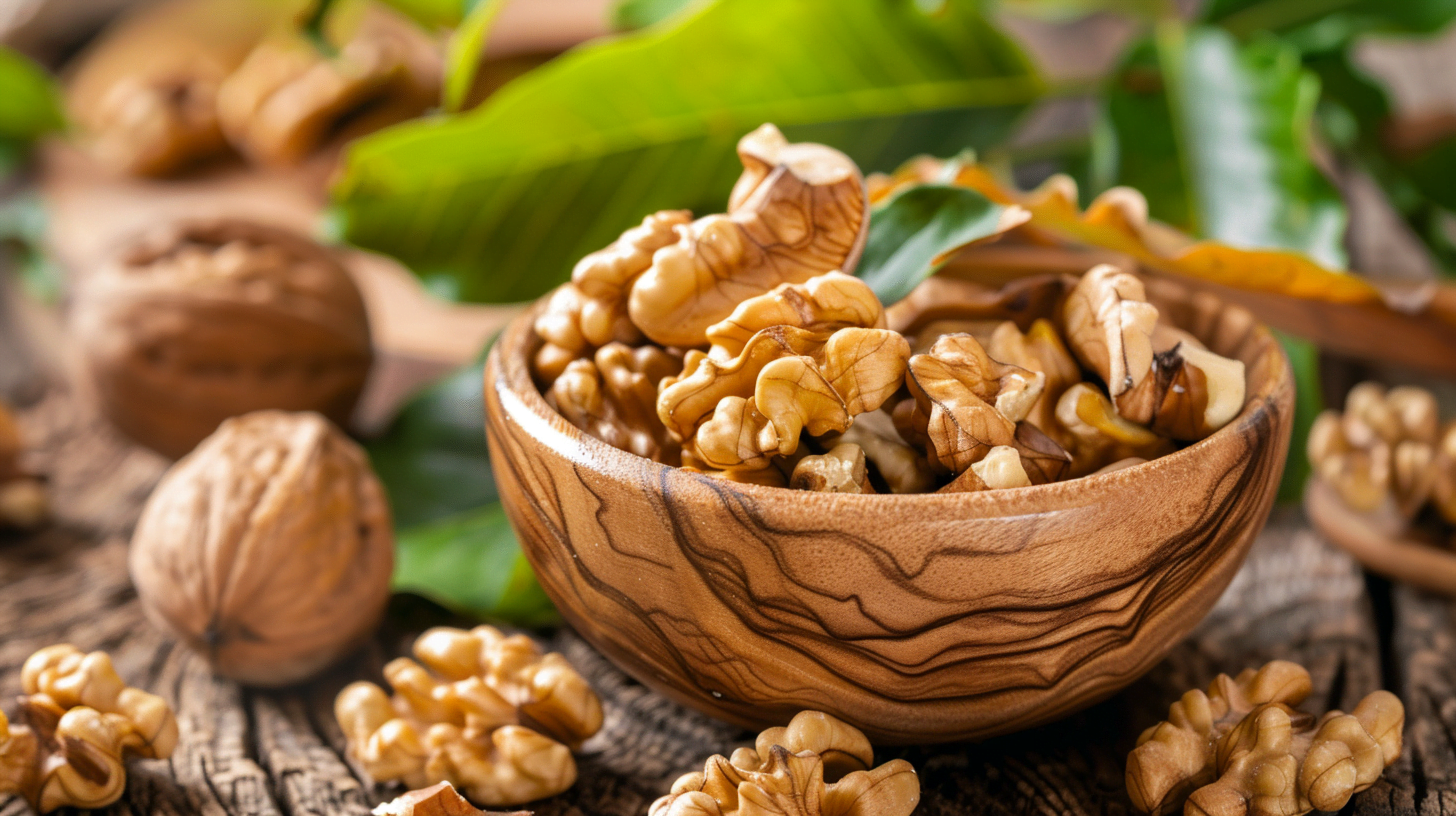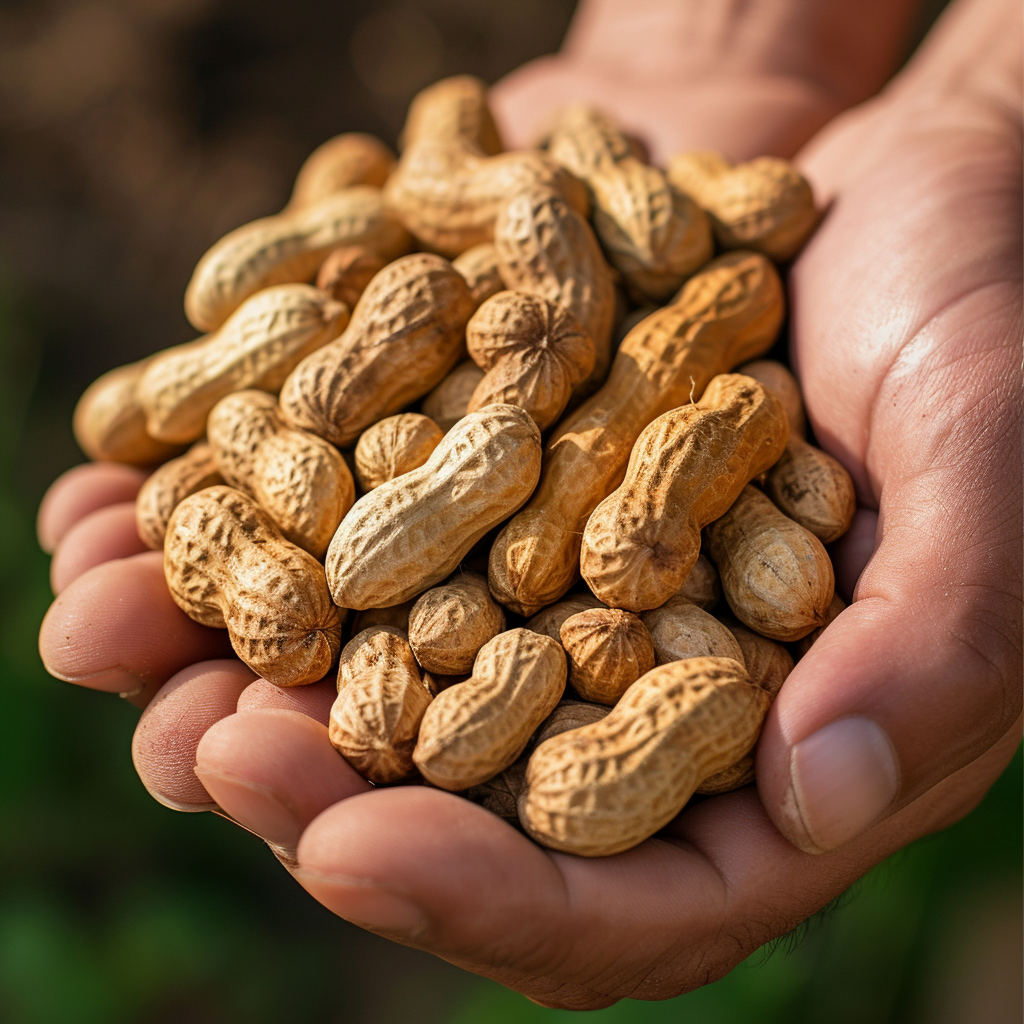Pistachios are a nutritional powerhouse that is loved worldwide for their distinctive flavor, satisfying crunch, and extensive health benefits. But global pistachio production is dominated by one country that has ideal conditions to grow these nutrient-rich nuts – Iran.
Overview of Pistachios
Pistachios are an important commercial nut belonging to the cashew family. The edible seeds have a mauve-colored skin and distinctive vertical split shells that pop open when ripe. Inside is the oval, pale green kernel with a subtly sweet, faintly nutty flavor.
Pistachios grow on small, bushy deciduous trees that thrive in hot, arid climates. The trees take 6 to 10 years to reach peak mature yields. Alternate bearing cycles mean high yields one season are followed by lower yields the next season. Trees can live and produce nuts for over 300 years if properly maintained.
The pistachio likely originated in central Asia and the Middle East and has been cultivated there for thousands of years. Archaeological evidence shows pistachios were commonly consumed as early as 7000 BC. The nuts were prized by ancient Persians and Mesopotamians and were even mentioned in the Old Testament of the Bible.
Pistachio trees were introduced to the United States in the 19th century. Commercial production began in the 1970s and is centered primarily in California due to its hot, dry climate.
Pistachios are rich in healthy fats, protein, fiber, antioxidants, minerals like potassium, and various beneficial phytochemicals. Recent studies have shown pistachios may help lower cholesterol, blood pressure and inflammation when consumed regularly.
The global pistachio market has steadily grown over the past two decades due to rising incomes and health consciousness. Demand is expected to increase, especially in emerging economies where pistachio consumption is not yet widespread.
Top Pistachio Producing Countries
Global pistachio production topped 1.4 million metric tons in 2021. By far the world’s largest producer is Iran, accounting for over 40% of total output:
- Iran – Produces over 1 million metric tons annually, making it the dominant player in the global pistachio trade. The major growing region is the Kerman province which contains vast pistachio forests.
- United States – Currently ranks second in production with around 400,000 metric tons per year. Nearly all US pistachio production is in California where the hot, dry conditions are ideal.
- Turkey – The third largest pistachio producer with around 210,000 metric tons output each year. Turkey focuses production in the Anatolia region which also has an arid climate.
- China – China produces approximately 170,000 metric tons annually, making it the fourth largest producer globally. Pistachio cultivation is centered in Xinjiang province in the northwest.
- Syria – Syrian pistachio production exceeds 100,000 metric tons per year, mostly around the Aleppo region which has a long pistachio growing tradition.
Other pistachio producing nations include Greece, Italy, Tunisia, Pakistan, Afghanistan and Australia, but their outputs are less than half of the top five countries.
The United States and China have seen the most growth in pistachio production in recent decades thanks to investments in new orchards and farming technology. But Iran remains dominant due to its highly favorable climate and long history cultivating these prized nuts.

Why Iran Leads the World in Pistachios
Iran towers over the rest of the world in pistachio production thanks to an ideal climate and location, centuries of cultivation experience, dense pistachio forests, strong government support, production innovations, and an abundance of labor.
Prime Growing Conditions
Iran’s climate is perfect for pistachios with long, hot, dry summers and cooler yet mild winters. Temperatures average 110°F in summer when pistachios ripen and 50°F in winter when trees go dormant. The arid conditions and rich soil enable optimal pistachio growth.
Most pistachio orchards are situated between 3,000-5,000 feet elevation where temperatures are ideal. The Zagros Mountains running along Iran’s western region also help block cold air from Europe.
Rich History of Cultivation
Pistachios have been grown in Iran and the broader Middle East for millennia. Archaeologists have found evidence of pistachio consumption dating back 9,000 years.
This extremely long cultivation history has allowed Iranian farmers to perfect efficient pistachio production methods. Generations of accumulated knowledge about optimal tree spacing, pruning practices, irrigation, and pest control enables high pistachio yields.
Massive Orchard Concentration
While pistachios are grown across Iran, the heart of production is the Kerman province which contains 300,000 hectares of pistachio orchards – the largest concentration in the world.
Kerman’s arid desert climate, high elevations between 5,000-6,500 feet, and sandy loam soil have proven ideal for immense pistachio forests. Mature pistachio trees thrive with minimal water due to deep root systems tapping into groundwater.
Government Investment
The Iranian government has prioritized expanding pistachio production since the 1990s. Generous subsidies, loans with low interest rates, and funding for irrigation infrastructure helped rapidly scale cultivation in Kerman and other provinces.
The government has also invested in pistachio research and education programs. In 2019, the Iranian Parliament proposed designating the pistachio tree as the national tree based on its economic and cultural importance.
Innovative Farming Methods
Iran has proactively adopted modern pistachio farming techniques and technologies to increase yields. Drip irrigation systems, fertilizer application, mechanical harvesting and automated processing all enable high-volume pistachio output.
Strict quality standards are enforced for both domestic consumption and exports. State agencies provide technical assistance and extensions services to pistachio farmers as well.
Low Labor Costs
Cultivating pistachios is labor-intensive, requiring large numbers of workers for harvesting and processing. Iran’s lower labor costs compared to other major pistachio producers gives it a competitive advantage.
Abundant laborers during harvest season reduces expenses associated with shake and catch harvesting. Cheaper post-harvest processing lowers overall production costs as well.
How Pistachios Are Grown and Processed
Producing pistachios involves several key phases from initial planting through final packaging:
Propagation and Planting
Pistachio trees are grown from rootstock and budded with scion wood from mature producing pistachio varieties. This ensures new trees have the ideal established genetics.
Trees are planted in orchards in a structured pattern such as 16 foot row spacing with trees 8 feet apart according to regional practices. Optimal planting density maximizes light exposure and air circulation.
Tree Maturation
Pistachio trees take 6 to 10 years to reach full bearing age where nut production is maximized. The roots must become well established and trees need to mature before large consistent yields are possible. Proper pruning and training while trees are young is essential.
Flowering and Pollination
Pistachio trees are wind pollinated. Male trees release large amounts of pollen that gets carried to female trees with pistillate flowers. A ratio of about one male tree for every 20 female trees is typical to ensure ample pollination.
Flowering begins once temperatures reach around 50°F. Ideal pollination occurs when temperatures range between 60-100°F during the bloom period.
Harvest
Pistachios are typically harvested in early autumn when the shells split open naturally. The nuts detach easily when branches are shaken mechanically or by hand. Catch frames are placed below the trees to collect falling nuts.
The harvest window is narrow, only 7-10 days, for optimal ripeness. Yields alternate year to year with heavier crops one season followed by a lighter season.
Drying and Curing
After harvest, pistachios have a moisture content around 20%. They are dried naturally or in mechanical driers until the kernel moisture reaches 5-8%. Proper drying prevents mold growth.
Curing by keeping pistachios for 1-2 weeks further enhances flavor. The nuts are then stored in breathable sacks until further processing.
Shelling and Roasting
The hard outer pistachio shells must be cracked open to extract the seeds, either by hand or specialized machines. Mechanical shelling is more common in high-volume production.
Many pistachios then undergo dry roasting which improves flavor and texture. Roasting occurs at temperatures around 280°F for optimal results.
Packaging and Distribution
Once shelled and roasted, edible pistachios are selected by size, packaged, and prepared for final sale and distribution. Steps include:
- Sorting – Pistachios are sorted by size, shape and quality using sieves, air jets, mechanical sorting machines, or by hand.
- Salting – Many pistachios are lightly salted through brining or dry salting to enhance flavor. Salted or unsalted varieties are available.
- Inspection – Pistachios are visually inspected for quality and to remove any defects prior to packaging.
- Packaging – For retail sale, pistachios are packaged in bags or boxes in various weights. Bulk pistachios destined for processing may be kept in large sacks.
- Distribution – Packaged pistachios are shipped to stores or food manufacturing companies domestically and internationally. Proper storage prevents rancidity.
Stringent food safety procedures are followed during processing to ensure fresh, high-quality final products. Automation enables large-scale pistachio processing, but smaller growers often use more traditional manual techniques.
Global Pistachio Trade and Consumption Patterns
In addition to dominating production, Iran also leads global pistachio exports by a wide margin:
- Iran exports over $1 billion worth of pistachios annually according to FAO data. Shelled pistachios destined for snacking are the top export.
- The United States follows at around $450 million in pistachio exports each year as the second largest exporter despite high domestic demand.
- Turkey and Hong Kong also help meet international pistachio demand through exports.
The top global importer of pistachios is China. With over 1.4 billion people and rising incomes, China has enormous consumption growth potential. Other top importers are India, Japan, Canada, Russia, and Germany.
Pistachios are consumed in many forms:
- Snacking – Most pistachios are eaten as convenient, nutrition-packed snacks. In-shell or shelled nuts are consumed by themselves or included in custom snack mixes.
- Ingredient – Pistachios are used as ingredients in both sweet and savory foods. Common examples are ice cream, granola, pastries, breads, salads, pasta, and rice dishes.
- Flavoring – Pistachio oil is prized as a cooking oil. Ground pistachios or pistachio butter are used to enhance flavor and texture.
- Garnish – Chopped or whole pistachios are used as decorative, crunchy garnish for dishes like desserts and sautéed vegetables.
Rising incomes and greater health consciousness have boosted global pistachio demand. Consumers appreciate pistachios as a healthier snack alternative high in antioxidants, protein and beneficial fats.
The global pistachio market is forecast to reach nearly $6 billion by 2028 according to market research firm Grand View Research. Robust future growth is expected, especially in emerging markets like China and India.
Outlook and Future for Pistachio Production
Despite some fluctuations due to alternate bearing cycles, the long-term trajectory for pistachio production and consumption is positive:
Rising Global Demand
As international pistachio awareness and consumption increases, demand is projected to rise steadily in coming decades. Worldwide promotion of pistachios as a healthy food should spur greater uptake.
Domestic consumption within Iran may also increase as incomes rise. But the bulk of growth will likely come from emerging markets like China, India, Eastern Europe and the Middle East.
Potential Production Increases
Assuming adequate land and water resources are available, global pistachio production could expand by planting new orchards in suitable climates like Central Asia, Australia, South America and Africa. Domestic production may then rise in key import markets.
However, it takes at least 5-7 years for new pistachio orchards to reach profitability, so supply adjustments lag behind demand shifts. This will continue to benefit established producers like Iran.
Water Constraints
The water-intensive nature of pistachio production poses challenges in arid regions like Iran and California. Water shortages could limit production growth and affect yields.
Continued improvements in irrigation efficiency, water recycling and salt-tolerant rootstock will be needed to produce more pistachios with constrained water resources.
Climate Change Impacts
Rising temperatures and changing precipitation patterns associated with climate change may negatively affect pistachio yields without mitigation strategies.
Heat stress could hamper pollination if spring temperatures rise too high in pistachio growing regions. Pest and disease pressures may also increase at warmer temperatures.

Innovations to Increase Productivity
Advances in mechanization, digital monitoring, genetics, integrated pest management and other technologies may improve future pistachio yields to meet demand.
Investment is needed in research and innovations to sustainably increase productivity, especially as labor and land availability becomes more constrained. Adoption of new technologies will require government and institutional support.
The future prospects remain strong for the global pistachio industry over the long run. But continued innovation and adaptation will be needed in coming decades to respond to changing environmental conditions and rising demand.
Iran’s pistachio output specifically could potentially double from current levels if enough resources are dedicated to expanding production. But maintaining competitiveness in the global market is contingent on efficient farming techniques and quality standards.
Conclusion
In summary, pistachio production is currently dominated by Iran which produces over 40% of the global total. Ideal climate conditions, extensive pistachio forests, a rich history of cultivation, and government support enable Iran’s world-leading output.
The United States, Turkey and China round out the top pistachio producers – but each produces less than half of Iran’s volume. Robust demand growth is expected in the decades ahead, especially in emerging Asian markets.
While Iran will likely maintain its status as the top pistachio powerhouse, global production could increase if new suitable regions are planted. But adequate water availability is a concern in arid pistachio growing areas. Continued innovation in cultivation methods, processing, and water management will be key to future pistachio supply meeting worldwide demand.



